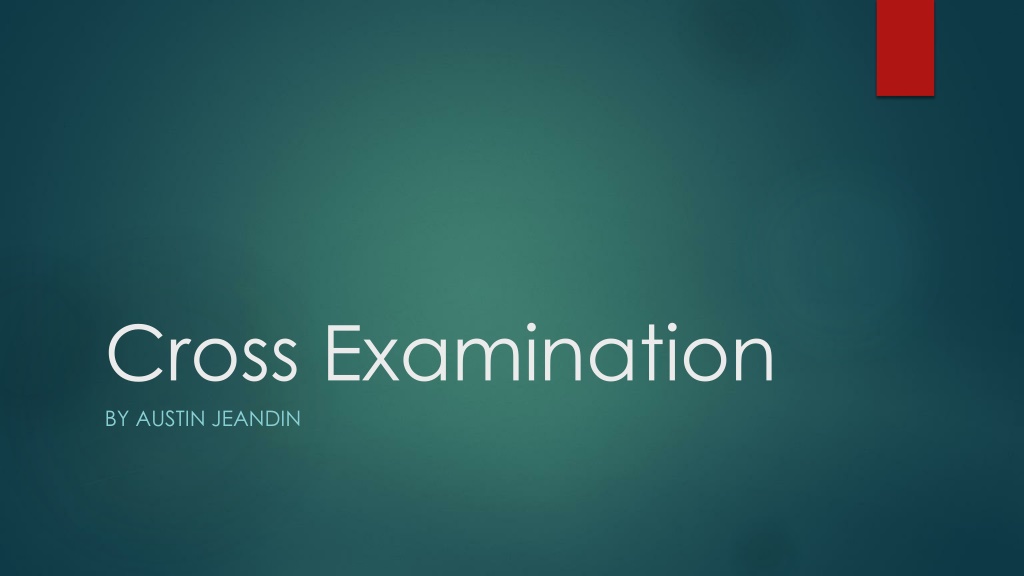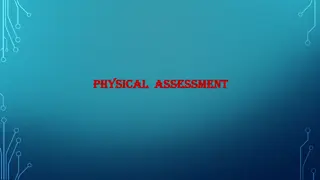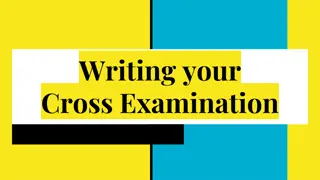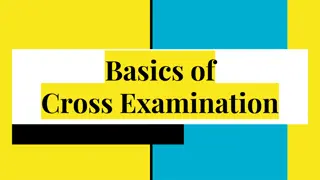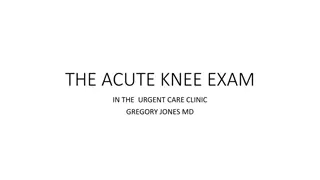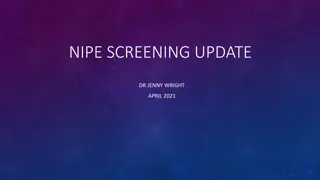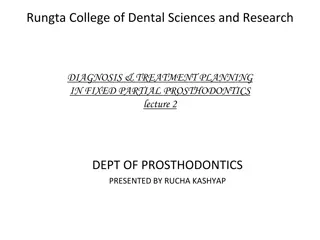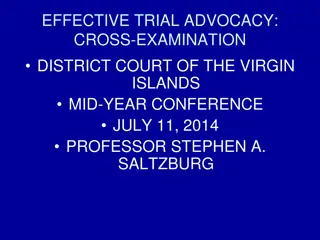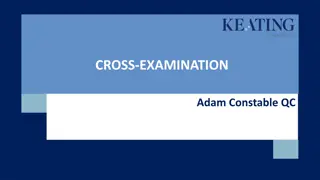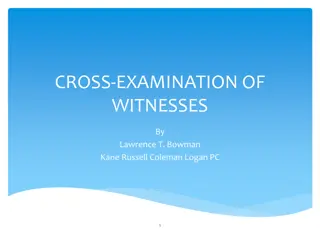Mastering Cross-Examination: Techniques and Strategies
Understand the goals and procedures of cross-examination, learn vital techniques such as leading questions and signposting, and explore examples like challenging witness identification in a hit-and-run case. Discover how to extract crucial evidence effectively while avoiding common pitfalls.
Download Presentation

Please find below an Image/Link to download the presentation.
The content on the website is provided AS IS for your information and personal use only. It may not be sold, licensed, or shared on other websites without obtaining consent from the author.If you encounter any issues during the download, it is possible that the publisher has removed the file from their server.
You are allowed to download the files provided on this website for personal or commercial use, subject to the condition that they are used lawfully. All files are the property of their respective owners.
The content on the website is provided AS IS for your information and personal use only. It may not be sold, licensed, or shared on other websites without obtaining consent from the author.
E N D
Presentation Transcript
Cross Examination BY AUSTIN JEANDIN
What do you think? Effective? Not effective? realistic?
Goals Understand the purpose of a cross-examination Recognize leading questions Apply effective cross-examining techniques Avoid common pitfalls of cross-examination Create a successful cross-examination of a witness Bonus: Understand why most cross-examination you see in movies and TV shows are terrible!
Procedure Cross-examination follows direct- examination Gives the opposing attorney the opportunity to challenge the witness testimony
Main Purpose Extracting the necessary evidence that allows your side to win the case Get what you need and get out! What types of questions should you ask? WORK BACKWORDS What facts do you need this witness to established for the jury to believes your version of the story? Question: Is it always a good idea to cross-examine?
Example: Hit and Run Identification You are cross examining the victim of a hit and run accident. During the direct examination, the victim pointed at the defendant (your client) and said, that is the women that crashed into my car and ran away. The defense s theory is that the victim mistakenly identified your client as the perpetrator. What kinds of questions would challenge the victim s accusation?
Example: Hit and Run Identification Stronger Areas of Focus How well did the defendant see the perpetrator s face? Weaker Areas of Focus Was the victim at fault for the accident? Can the victim remember other important facts about perpetrator? (e.g., what they were wearing) Are there reasons that victim would want to wrongfully accuse the defendant? Did the victim misrepresent how bad the accident was? Why did the victim decided to take that particular route?
Vital Cross Examination Techniques Leading questions Signposting Controlling the witness Impeachment via the 3 Cs method
Leading Questions What is a leading questions? Goal: have witness respond to every question with yes or no The attorney must know the correct answer! How? Recitation of facts in the form of a question One fact per question
Example: Hit and Run Identification Your windshield was cracked from the impact the accident, correct? Yes You saw the perpetrator got out of their car immediately after the accident Yes You were still in the driver s seat when the perpetrator got out? Yes Once they got out, the perpetrator was directly in front of your car? Yes That was the only time you got a good look at their face? Yes You saw them through the broken windshield? Yes
Signposting Introduces or signals a transition to question on a new topic Like paragraphs in an essay Critical for organization and adding emphasis E.g., Signpost: Mr. Defendant, I would now like you to answer some questions about the night of the incident, Jan 31, 2023. You went to Ms. Victim s home that evening?
Controlling the Witness Cross examinations are driven by the lawyer (not the witness) The lawyer's questions take center stage Helpful tips Stand close to the witness, ideally facing the jury Cut off avenues of escape before asking tough questions If you lose control, relax and backtrack Reestablish the facts you need to get to your objective
Cross Examination - Impeachment What does it mean to impeach a witness? Impeach when the witness makes an inaccurate statement Impeach via the 3 Cs method: Step 1: Commit the witness to the wrongful statement Step 2: Credit how the witness s prior statement is accurate Step 3: Confront the witness
Example: Hit and Run Identification Ms. Victim, what color was the perpetrator's hat? Red Ms. Victim, your testimony today is that the perpetrator s hat was red? Yes (Commitment) When you spoke to the police the day of the accident, you were honest with them? Yes (Credit) And the officer taking your statement was paying close attention to what you said? Yes Please read line 15 of the police report aloud? (the passage about the hat) Victim reads passage saying the hat was yellow (Confront) Ms. Victim, the hat the perpetrator was wear a yellow hat, correct? Yes (Confront)
Biggest Cross Mistake One Question Too Many Cross-examination is for gathering facts and impressions NOT for accusations and argument save for closing This is one major problem with the clip You went [to the victims house] to murder him?
Other Common Mistakes Asking non-leading questions Having no plan Simply rehashing the direct Sticking to the scripted questions no matter what Not knowing the facts of the case
Class Exercise What am I wearing?
Group Exercise Refer to your worksheet Wait for your group to be assigned a witness
